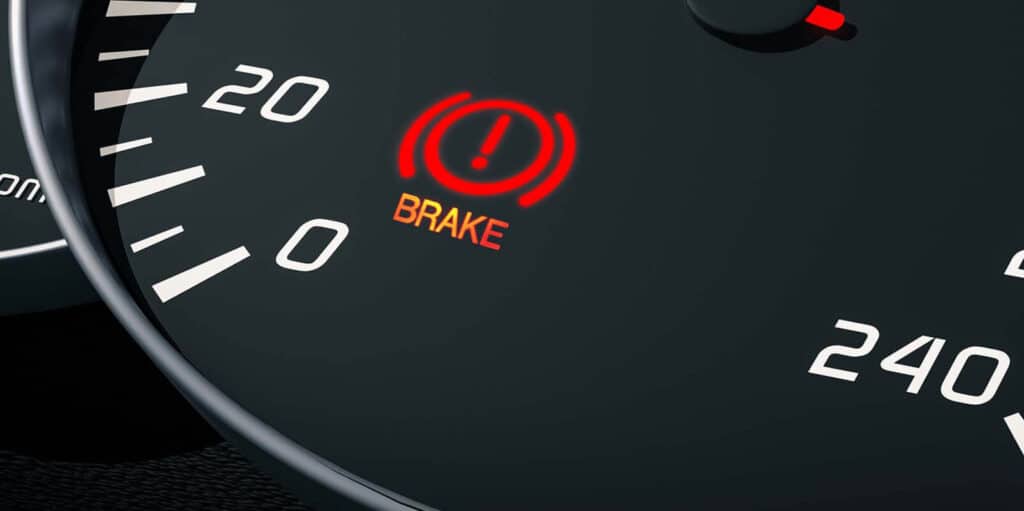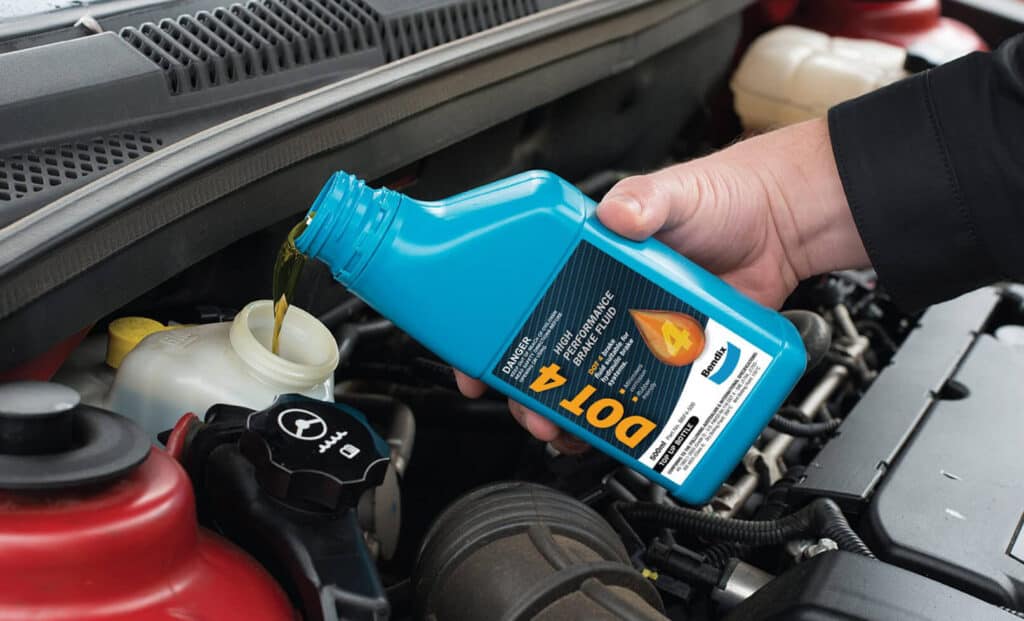The Importance of Brake Fluid Maintenance
Did you know that neglecting your brake fluid can lead to dangerous driving conditions and costly repairs? Brake fluid is a crucial component of your vehicle’s braking system, and regular maintenance ensures that your brakes remain effective and responsive. In this article, we will explore four telltale signs that indicate it’s time to change your brake fluid, keeping you safe on the road.
Understanding Brake Fluid: Functions and Types
Brake fluid is a hydraulic fluid that transfers the force from your brake pedal to the brake calipers, which then clamp down on the brake pads and bring your vehicle to a stop. There are two main types of brake fluid: glycol-based (DOT 3, DOT 4, and DOT 5.1) and silicone-based (DOT 5). Each type has its own specific properties and performance characteristics, so always consult your vehicle’s owner’s manual for the recommended brake fluid.

Sign #1: Discolored or Darkened Brake Fluid
Over time, brake fluid can become contaminated with moisture, dirt, and other debris. If your brake fluid appears dark or discolored, it’s a clear indication that it’s time for a change. Fresh brake fluid should be amber or clear in color, and anything darker than that could be compromising your braking performance.
Sign #2: Soft or Spongy Brake Pedal Feel
A soft or spongy brake pedal is often a sign that there’s air or moisture in your braking system. This can occur when brake fluid absorbs moisture from the air or when the fluid has deteriorated over time. If your brake pedal feels less firm than usual, it’s time to have your brake fluid checked and replaced if necessary.
Sign #3: Increased Stopping Distance or Reduced Brake Performance
If you’ve noticed that your vehicle requires more distance to come to a complete stop, it could be a sign that your brake fluid needs attention. Contaminated or old brake fluid can reduce the effectiveness of your braking system, leading to longer stopping distances and reduced overall performance.
Sign #4: Warning Lights on Your Dashboard
Your vehicle’s dashboard warning lights can alert you to potential brake fluid issues. If your brake warning light illuminates or your ABS (Anti-lock Braking System) warning light comes on, it’s essential to have your brake fluid checked as soon as possible.
How to Check Your Brake Fluid: A Step-by-Step Guide
1. Park your vehicle on a level surface and turn off the engine.
2. Locate the brake fluid reservoir under the hood, usually near the firewall on the driver’s side.
3. Check the fluid level and color through the reservoir’s translucent walls or by removing the cap.
4. If the fluid is low or discolored, consult your vehicle’s owner’s manual for the recommended brake fluid type and top off or replace as needed.
When and How to Change Your Brake Fluid: Best Practices
Changing your brake fluid at the right time is crucial for maintaining optimal braking performance and ensuring your safety on the road. Generally, it’s recommended to change your brake fluid every 2 years or 40,000 km, whichever comes first. However, it’s essential to consult your vehicle’s owner’s manual for specific recommendations, as some manufacturers may have different intervals.
When it’s time to change your brake fluid, you can either do it yourself or take your vehicle to a professional mechanic. If you’re comfortable with DIY, you’ll need a few essential tools like a brake bleeder wrench, a clear hose, a catch container, and a bottle of the appropriate brake fluid. Start by removing the old brake fluid from the master cylinder reservoir using a turkey baster or a syringe, being careful not to spill any fluid on your car’s paint. Refill the reservoir with fresh fluid and proceed to bleed the brakes, starting with the wheel furthest from the master cylinder and working your way to the closest. Attach the clear hose to the bleeder valve, open it, and pump the brake pedal until you see new fluid coming out without any air bubbles. Close the valve, check the reservoir fluid level, and repeat the process for each wheel. Once complete, make sure to properly dispose of the old brake fluid, as it is a hazardous waste. If you’re not comfortable with this process, it’s best to leave it to a professional mechanic to ensure your braking system remains in top-notch condition
Preventative Maintenance: Keeping Your Braking System in Top Condition
Keeping your braking system in top condition is essential for ensuring safety and prolonging the life of your vehicle. Preventative maintenance involves regularly checking and addressing potential issues before they turn into more significant problems. Here are some key steps to help you maintain your braking system effectively:
1. Regularly inspect your brake pads and rotors: Routinely check your brake pads for wear and tear, and replace them when they reach the minimum recommended thickness (typically around 1/8 inch or 3mm). Similarly, monitor the condition of your brake rotors and look for signs of excessive wear, warping, or uneven surfaces. If necessary, have them resurfaced or replaced by a professional mechanic.
2. Keep an eye on brake fluid levels: Make it a habit to check your brake fluid levels at least once a month. If the fluid level is low, top it off with the recommended type of brake fluid. If you notice a sudden drop in fluid levels, there may be a leak in the system, which requires immediate attention.
3. Lubricate brake components: To prevent squeaking and ensure smooth operation, periodically lubricate your brake caliper pins, slides, and other moving parts with a high-quality brake lubricant. Be careful not to get any lubricant on the brake pads or rotors, as this can reduce braking efficiency.
4. Regularly clean your brake components: Over time, brake dust and debris can accumulate on your brake components, potentially affecting their performance. Cleaning your brakes with a brake cleaner spray can help remove dirt and grime, prolonging the life of your brake parts.
5. Have your brake system professionally inspected: Schedule a professional brake inspection at least once a year or as recommended by your vehicle’s manufacturer. A mechanic can identify and address any potential issues early on, ensuring your braking system remains in optimal condition.
By following these preventative maintenance steps, you can keep your braking system functioning efficiently, reducing the risk of accidents and costly repairs in the long run.

Pay Attention to the Signs and Stay Safe on the Road
Your brake fluid is a vital component of your vehicle’s safety system, and neglecting it can have serious consequences. By paying attention to these four telltale signs – discolored or darkened brake fluid, a soft or spongy brake pedal feel, increased stopping distance or reduced brake performance, and dashboard warning lights – you can ensure that your braking system remains in top condition.
Remember to follow your vehicle’s maintenance schedule and consult a professional mechanic when it’s time to change your brake fluid. Regular inspections and preventative maintenance will keep your brakes working efficiently, providing you with a safe and reliable driving experience. So, don’t ignore these signs – stay proactive and stay safe on the road.
